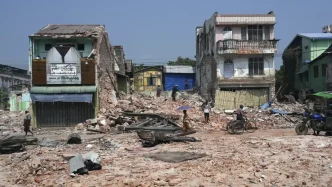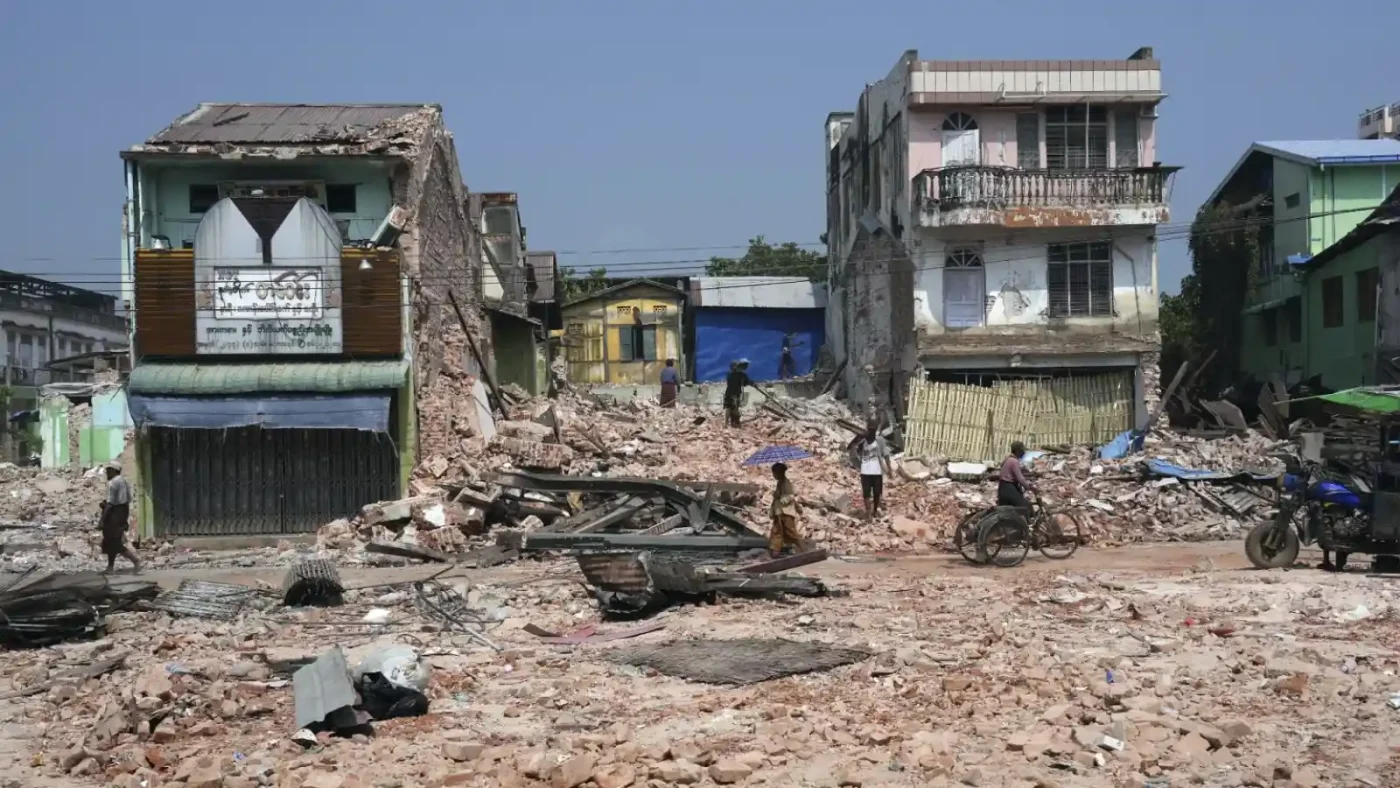A preliminary assessment of the damage caused by the March 28 earthquake in Myanmar pegged the initial cost at approximately US$1.8 million, according to government reports. That cost was quickly revised to US$15.8 billion once the full scale of destruction was realized. The quake, which struck with significant force, has exposed deep-seated vulnerabilities in the country’s infrastructure, raising urgent questions about preparedness and resilience in a nation frequently battered by natural disasters.
Immediate Impact and Response
The earthquake, centered in a region yet to be fully detailed in public reports, caused widespread structural damage, particularly in rural and semi-urban areas where building standards often fall short of modern seismic codes. Early estimates from Myanmar’s disaster management authorities suggest that hundreds of buildings, including homes, schools, and small businesses, have been affected. While no fatalities have been officially confirmed at the time of reporting, local sources indicate that injuries and displacements are likely underreported due to limited access to remote areas.
Relief efforts were mobilized swiftly, with the government deploying emergency response teams to assess the hardest-hit regions. International aid organizations, including the United Nations Office for the Coordination of Humanitarian Affairs (OCHA), have expressed readiness to assist, pending further data on the scale of the disaster. A spokesperson for the Myanmar government stated, “We are working around the clock to evaluate the full extent of the damage and ensure aid reaches those in need” as reported by local outlets on March 29.
Infrastructure Vulnerabilities Exposed
The US$15.8 billion damage estimate, while substantial, is considered by experts to be a conservative figure that may rise as more comprehensive surveys are conducted. Much of Myanmar’s infrastructure, particularly in less developed regions, remains ill-equipped to withstand seismic events. Decades of underinvestment in public works, compounded by political instability and economic challenges, have left many communities vulnerable to natural disasters.
Seismologists note that Myanmar lies near several active fault lines, making earthquakes a recurring threat. The March 28 quake serves as a stark reminder of the 2016 earthquake in Bagan, which damaged numerous historic pagodas and underscored the fragility of both modern and ancient structures. “Myanmar needs urgent investment in earthquake-resistant construction and urban planning” said Dr. Aung Kyaw, a Yangon-based geologist, in an interview with a regional news agency. Without such measures, the human and economic toll of future disasters could be far graver.
Economic and Social Ramifications
Beyond the immediate physical damage, the earthquake’s economic impact is likely to reverberate through Myanmar’s already strained economy. The affected regions, though not yet fully specified in official releases, are believed to include agricultural zones critical to local livelihoods. Damage to irrigation systems, storage facilities, and rural roads could disrupt food supply chains, exacerbating existing challenges in a country where poverty rates remain high.
Small businesses, many of which operate on razor-thin margins, face an uphill battle to recover. The original estimated US$1.8 million in damages did not account for indirect losses such as lost income or disrupted trade, which could push vulnerable households deeper into financial distress, and the full scale of wide scale destruction caused by the earthquake. Humanitarian agencies have flagged the potential for increased food insecurity in the coming months if recovery efforts are not adequately funded.
Socially, the disaster risks compounding the challenges faced by Myanmar’s diverse communities, many of whom are still grappling with the aftermath of conflict and displacement. The quake’s impact on schools and community centers—often the backbone of rural life—could hinder access to education and social services, particularly for children and marginalized groups. “We are concerned about the long-term effects on displaced families” said a representative from a local NGO, speaking to international media.
Government and International Response
The Myanmar government, under significant pressure to demonstrate effective crisis management, has pledged to prioritize reconstruction and support for affected communities. However, questions remain about the capacity of state institutions to deliver on these promises, given ongoing political tensions and limited fiscal resources. Public sentiment, as reflected in posts on social media platforms like X, suggests a mix of frustration and cautious hope, with many users calling for transparency in how relief funds are allocated.
Internationally, the response has been one of cautious engagement. Neighboring countries, including Thailand and Bangladesh, have offered technical assistance and humanitarian aid, though the scale of their involvement remains unclear.
Historical Context of Natural Disasters in Myanmar
Myanmar’s history of natural disasters provides a sobering backdrop to the current crisis. The country has faced devastating events in recent decades, from Cyclone Nargis in 2008, which claimed over 138,000 lives, to recurring floods and smaller-scale earthquakes. Each event has exposed systemic weaknesses in disaster preparedness and response, with rural communities often bearing the brunt of the impact.
The March 28 quake, while less catastrophic in terms of immediate loss of life compared to Nargis, highlights a persistent challenge: the need for a coordinated national strategy to mitigate disaster risks. Urban centers like Yangon have seen some improvements in building codes and emergency planning, but these measures have yet to extend consistently to rural areas, where the majority of the population resides.
Looking Ahead: Challenges and Opportunities
As Myanmar begins the slow process of recovery, the March 28 earthquake offers both a warning and an opportunity. The full damage estimate of US15.8 billion is a call to action for policymakers, engineers, and international partners to address the structural and systemic issues that amplify the impact of natural disasters. Investments in resilient infrastructure, early warning systems, and community-level preparedness could save countless lives and livelihoods in the future.
Yet, the path forward is fraught with obstacles. Political instability, limited public funding, and competing national priorities may hinder efforts to enact meaningful change. Public trust in government-led initiatives, already strained by years of conflict and governance challenges, will be critical to the success of any reconstruction plan.
For now, the focus remains on the immediate needs of those affected by the quake. As more detailed reports emerge, the true scale of the damage—and the resources required to address it—will come into sharper focus. Until then, Myanmar stands at a crossroads, with the potential to rebuild not just damaged structures, but the very foundations of its approach to disaster resilience.
As the nation grapples with this latest setback, one question looms large: will this disaster catalyze the long-overdue reforms needed to protect its people, or will it become another chapter in a cycle of vulnerability and loss?
















